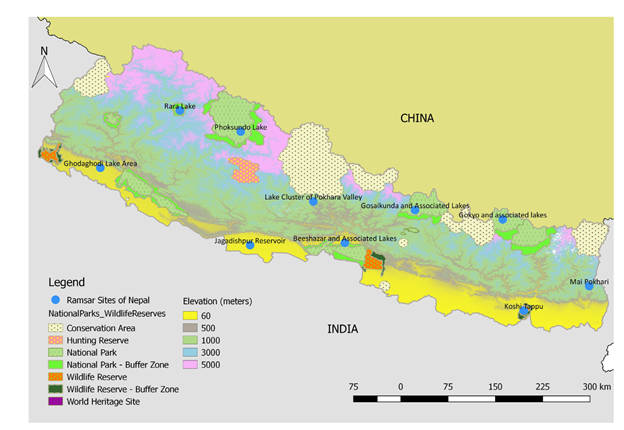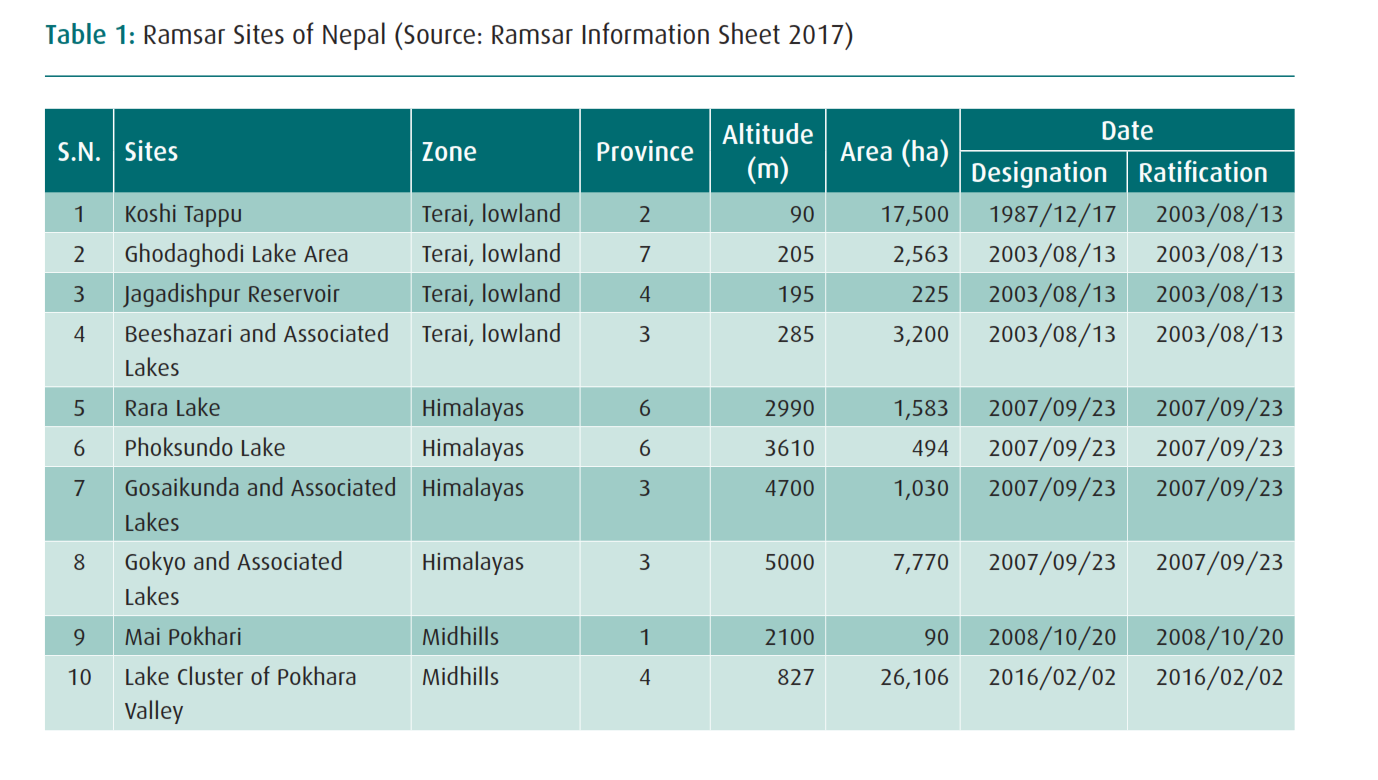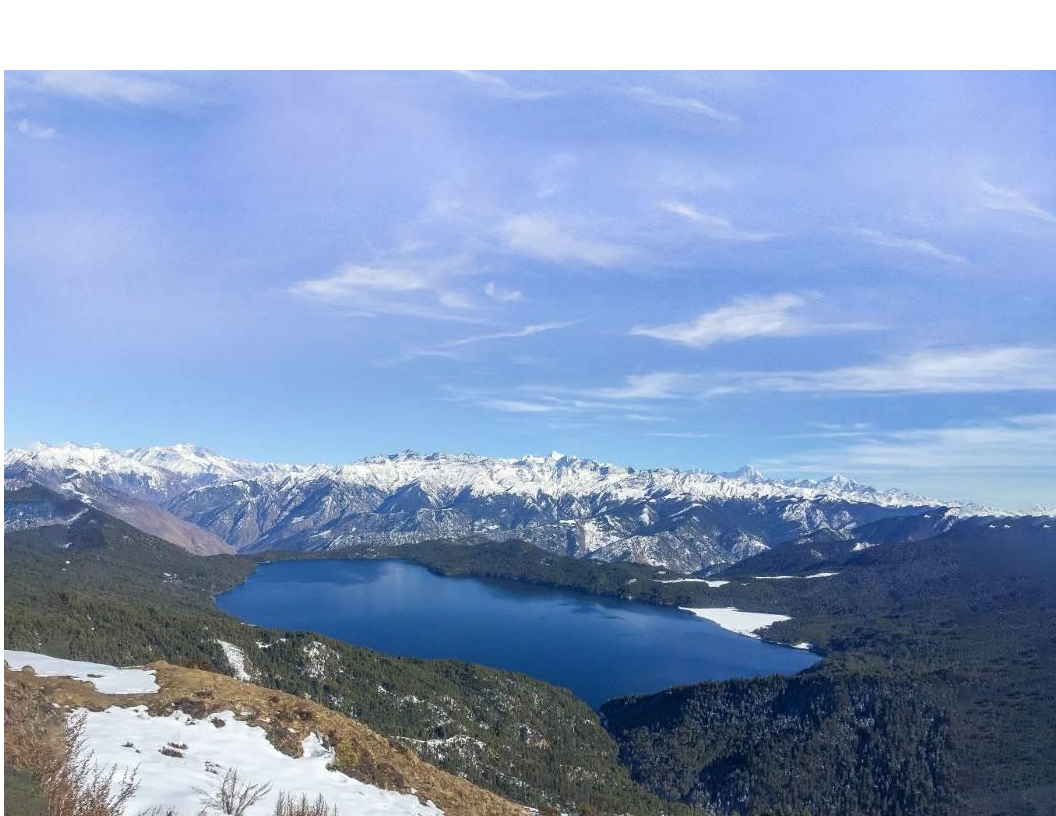
Lakes and wetlands are some of the most productive ecosystems with important ecological, cultural, and economic significances, and are instrumental for the health; welfare; safety; and sustainability of both ecosystems and communities. Wetlands areas are estimated to cover more than 5% of Nepal. The Nepalese wetlands, including Ramsar sites, harbor many threatened and endangered flora and fauna and provide excellent ecological habitats for internationally important winter migratory birds, aquatic fauna, and other wildlife. They harbor at least 230 indigenous fish species, more than 200 species of plankton; 192 species of mollusks, and 117 species of amphibians (IUCN, 2004; ICIMOD and MoEST, 2007; Budha, 2012; NBSAP, 2014). 27% of nationally threatened birds species (BCN and DNPWC, 2010); 85 percent of endemic vertebrates (IUCN, 2004), and about 24% of Government protected plants are known recorded from wetlands. Total ten wetlands sites of Nepal are included in Ramsar List till 2019, Koshi Tappu being the first listed wetland and Lake Clusters of Pokhara Valley being the latest included wetland which covers 60,561 hectares area of the total area of the country. Ramsar sites in Nepal are distributed throughout the country and are classified as high altitude wetlands, mid-hill wetlands and terai wetlands. The Ramsar Site hosts endemic species of floral species some of which are endangered. It too serves as excellent habitat as a water hole and corridor for numerous digits of threatened and endangered faunal diversity.

